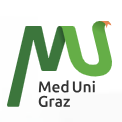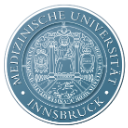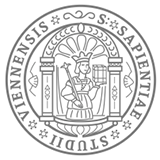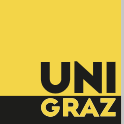Detailed introduction of University of Innsbruck:
Introduction
The University of Innsbruck is located in Innsbruck, a mountain city at the foot of the Alps in western Austria. It is a large and historic comprehensive national university in Austria, and plays an important role in teaching, scientific research and culture.
Overview
Student size: Nearly 28,000 students.
Faculty: More than 4,000 faculty and staff.
History
Founded: October 15, 1669, by Leopold I, Holy Roman Emperor.
Important development stage: Initially, there were four departments, among which the theology department was more famous. In 2004, the original Department of Medicine of the University of Innsbruck became independent as the Medical University of Innsbruck.
School Strength
Teaching Resources: The school has a total of 16 faculties and departments, scattered throughout the city of Innsbruck, forming a university without walls, realizing the sharing of education, facilities and other resources.
Academic Research: As the largest research and education institution in western Austria, the University of Innsbruck conducts cutting-edge research in many fields, especially in basic research. Its research results have a certain influence internationally. The school also cooperates with many international research and education institutions to promote academic exchanges and development.
Institutional Nature
The University of Innsbruck is a public university.
Educational Philosophy
Focus on cultivating students' innovative thinking and practical ability, emphasizing interdisciplinary knowledge integration, and encouraging students to explore and communicate between different disciplines to cultivate professional talents with comprehensive qualities and global vision to adapt to the needs of diversified social development.
Key laboratories and disciplines
Key disciplines: Catholic theology, law, society and economics, medicine, humanities, natural sciences, architectural engineering and architecture are popular. In addition, the school also has strong strengths in basic disciplines such as physics, chemistry, biology, computer science, and applied disciplines such as sports science and psychology.
Key laboratories: The school has many advanced scientific research laboratories, such as the Quantum Optics and Quantum Information Laboratory of the School of Physics, the Drug Development Laboratory of the School of Chemistry and Pharmacy, and the Molecular Biology Laboratory of the School of Biology. These laboratories provide important platform support for the research of related disciplines.
Faculty
The school has 16 departments covering a wide range of disciplines, including the Catholic Seminary, the School of Languages and Cultures, the School of Philosophy and History, the School of Law, the School of Economics and Statistics, the School of Management, the School of Political Science and Sociology, the School of Psychology, the School of Sports Science, the School of Biology, the School of Geography and Atmospheric Sciences, the School of Mathematics, Computer Science and Physics, the School of Chemistry and Pharmacy, the School of Architecture, the School of Civil Engineering, the School of Education, etc.
Ranking
In 2008, the Times Higher Education Supplement: ranked 98th in the world's top 100 universities and ranked second in Austria.
In 2010, the Times Higher Education Supplement: ranked first among Austrian universities.
Webometrics World University Rankings: 1865.
Expenses
Tuition fees: Tuition fees at public universities are relatively low, generally about a few hundred euros per semester, but may vary slightly for different majors and degrees.
Living expenses: The living expenses in Innsbruck are relatively moderate, and it costs about 800-1200 euros per month, including accommodation, food, transportation, etc.
Campus
Location and environment: The University of Innsbruck is located on the banks of the Inn River in the center of Innsbruck. It is surrounded by the Alps and has a beautiful natural environment. At the same time, the city has a profound cultural heritage and is a famous tourist destination and winter sports center, providing students with a good learning and living environment.
Architectural style: The campus has a variety of architectural styles, including both ancient historical buildings and modern teaching and research facilities. The ancient buildings show the traditional architectural art and cultural characteristics of Austria, while the modern buildings are equipped with advanced teaching equipment and scientific research equipment, providing convenient conditions for teachers and students to study, research and live.
-

Graz University of Technology
-

Medical University of Graz
-

University of Linz
-

Medical University of Vienna
-

Innsbruck Medical University
-

University of Vienna
-

University of Leoben
-

St. Pölten University of Applied Sciences
-

Vienna University of Technology
-

University of Graz
-

Mesoamerican University
-

Istmo University
-

Mariano Galvez University of Guatemala
-

Regional University of Guatemala
-

Galileo University
-

Francisco Marroquín University
-

Rafael Landívar University
-

University of the Valley of Guatemala
-

University of San Carlos of Guatemala
-

Technological Institute of Tlaxcala Plateau
-

Golfo University
-

Technological University of South Sonora
-

Technological University of Huejotzingo
-

Tizimín Institute of Technology
-

Chilpancingo Institute of Technology

